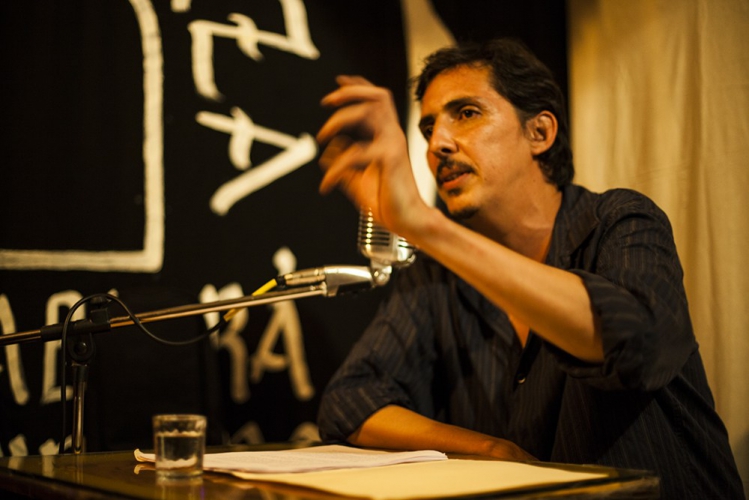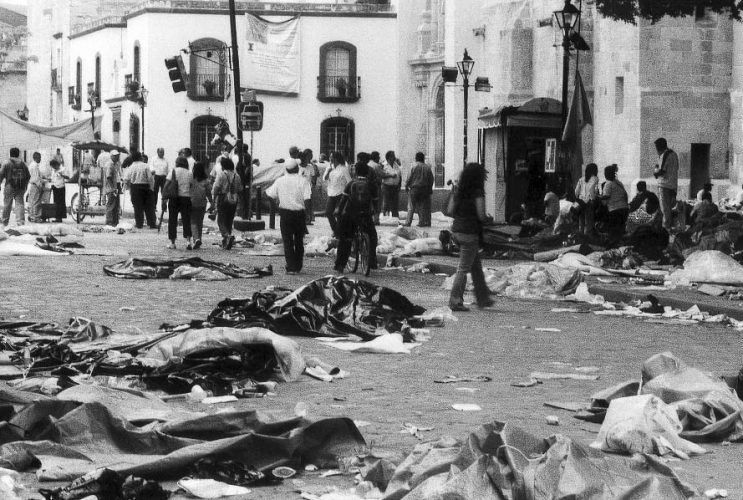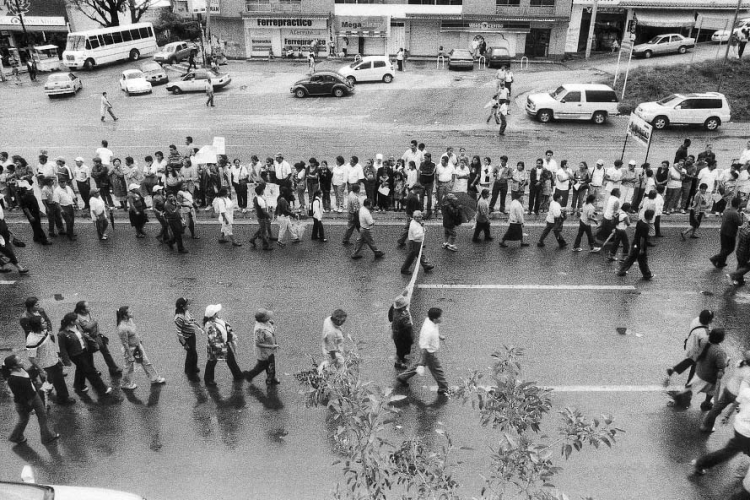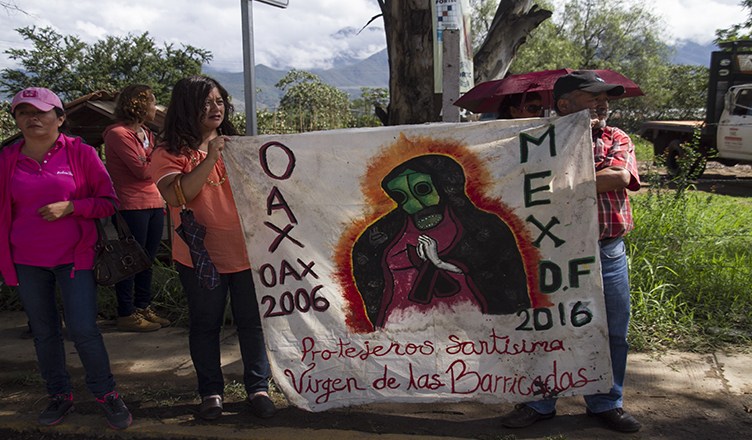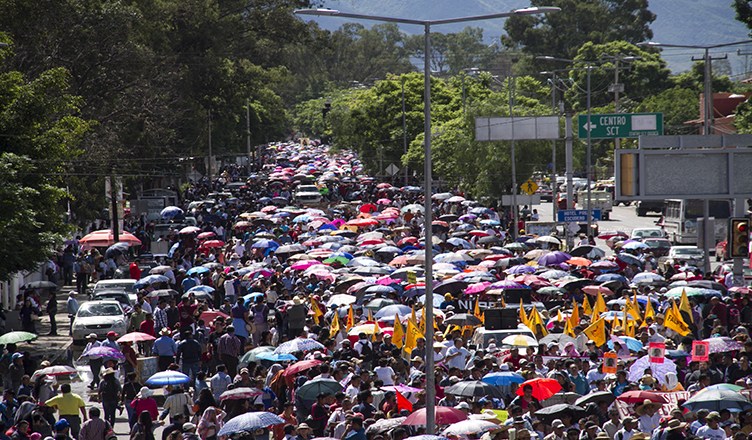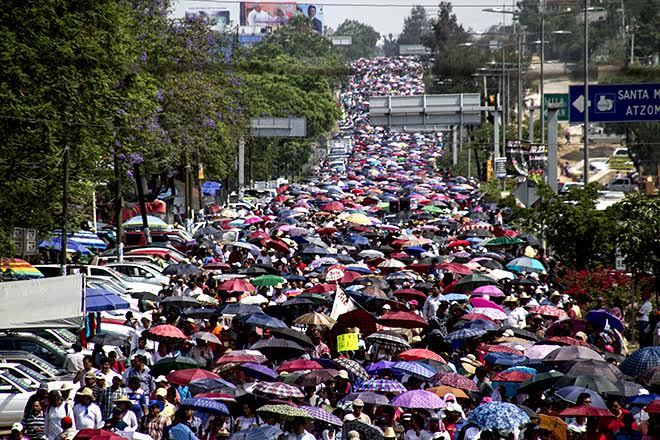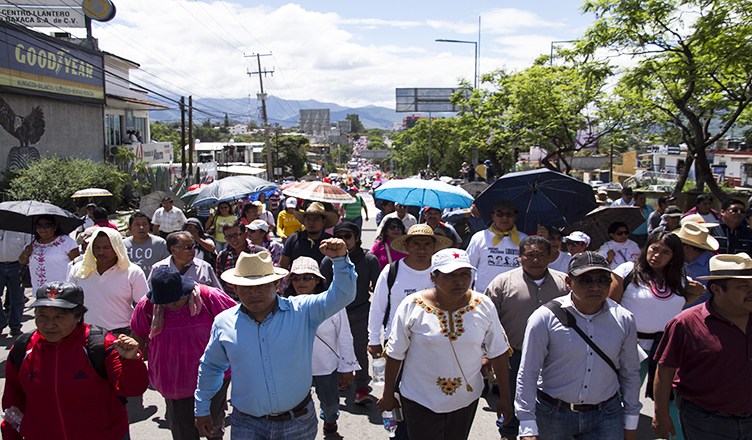Oaxaca, 10 Years Since 2006
SUBVERSIONES- Autonomous Communication Agency
Photos: Pauline Rosen Cros, Renata Bessi and Santiago Navarro F.
Interview: Niñx Salvaje
Ten years after the June 14, 2006 date when the popular uprising in Oaxaca began, we spoke with our compañero Fernando Lobo, writer and former broadcaster of Radio Plantón.
What is your perspective of what happened in Oaxaca in 2006?
At that time there was a huge conflict between the teachers' union and the state government that was directly related to a wage demand. It was a matter of money. On the other hand, one of the strategies the union took was to not acknowledge the immediate authority- the governor, and instead engage in direct dialogue with the federal government. In this sense, this was the first moment that the idea of the removal of the governor was raised.
But before that happened, I was a contributor on Radio Plantón, and on June 3rd; a notice in La Jornada stated, "the Federal Preventive Police (PFP) is getting ready to evict the teacher’s plantón (encampment)," which was created as part of the actions used by the union to demand a salary increase. When this notice came out on June 3rd, we started receiving calls in the morning- the union’s radio, calls from the public, listeners who were not teachers, people who were not even involved in social movements or civil organizations: they were neighbors who wanted to know if there would be a plantón or not.
While we answered calls, people took advantage of being on the air to protest a lot of things. From June 3 to June 14, Radio Plantón became a kind of reality show of social protest and discontent. It got so hectic that on June 3rd we began to transmit 24 hours a day because from then until the 14th, we received nonstop calls until 3-4 AM. Our strategy was simple: we got the phone calls on air, that’s all.
Then on June 14th, the eviction of the plantón was attempted, it failed, and immediately a group of students from UABJO, people from the Frente Popular Revolucionario, (Revolutionary Popular Front), take over Radio Universidad and that reality show of social rage expands with a force on AM over the whole valley and becomes a revolt, practically an insurrection. Basically, all of the major actions of 2006 had to do with mass means of communication. The occupied media functioned as a way to explain the causes of the movement but also as a safety device and self-defense. And in that sense they became indispensable.
We had Radio Plantón, after that Radio Universidad, after that CORTV, the state television and state radio stations that were shot at by the state police themselves, and finally, we had commercial radio.
The 21st of August was the day the commercial radio stations were taken over and already a national state of alarm was in place: the owners of these radios are the owners of mass media. The state government responded with a convoy of armed police who fired intimidatingly towards the barricades. They only shot head on once and that was when Lorenzo San Pablo was killed.
The day the commercial radio was taken, the “Law”, called out the population with an appeal that I thought was absolute nonsense: "There are armed men shooting civilians, please go out to the streets to take the barricades". But what I found impressive that night is that people went out and put up barricades. It is one of the greatest phenomena that I still don’t understand. But finally this is how I understand 2006, it was a channeling of social rage that was driven by mass media taken by ultra left movements.
Could something like that happen again now in 2016?
Something like that, no. A conflict will occur, there will be rebellion and repression, legal and illegal. Those patterns will not change. The rest is a variable that we absolutely do not know, but what took place will not be repeated. And above all, the cause is not the same. In 2016, what’s at stake is an authoritarian imposition, what they call "educational reform", ie administrative. Labor reform is the first step in outlawing a union that could rebel against future re-privatization of education, and that’s what’s coming. In that sense what’s at stake is much higher, and conditions in the country are much weaker. It’s a State in disintegration to the extent that these neoliberal policies, that end up being a simple business schedule, are adopted. That's what it is: a neoliberal project. Ultimately it means stopping any public policy to put an end to a huge business agenda.
For you, what was the biggest mistake, or the biggest mistakes that were made in 2006 and afterwards?
The first was the relationship with the media. There is a kind of permanent rejection of what the mass media puts forth, which are scheduled campaigns against the very established popular movement, with many interests and a lot of money involved.
But we appoint spokespeople, who are very interested in talking to that media. Demonstrators respect reporters. "Tell the truth", they ask them. Everyone is waiting for that great heap of commercial interests of the elites to tell the truth. It's like asking pears from an elm tree, asking the impossible. An elm does not give pears. That is what we are asking them to do.
The second is how to assimilate violence. This is a lesson of 2006: in 2006, from October to November the movement began to produce a discourse in which we characterize ourselves as a movement of peaceful civil resistance. However, the large actions, which were almost all spontaneous and were not agreed upon in an assembly, were exalted. Like the CORTV occupation, the resistance of June 14, the take over of commercial radio. None of these actions, which of course were violent, were approved by a decision of an assembly. Not that I see this as a mistake, I can not understand that a great social movement was wrong, it cannot itself reason, you can not ask for a social movement to make strategic decisions. It is a great multitude with a multitude of subjectivities, interests, emotions, desires and ideals. In short: it is very complex, but I find this disjuncture between the presentation of a peaceful movement and the need for violence. I think we should assimilate it for two reasons. One, popular movements use violence, they must use it. To expose your body is to exert violence. And two, the state exerts violence permanently and most of the violence used is illegal. It is absolutely hidden. And in 2006 we used two faces: we are peaceful but violence is exercised. I see no mistake there, but I think we need to reflect about it deeply. Especially, to take into our hands the concept of violence and work with it.
Get Involved
If you'd like to help with maintaining or developing the website, contact us.
Publish
Publish your stories and upcoming events on Indybay.


